Your Dedicated Tree Care Partner
Your trees are valuable assets that enhance your property's beauty, provide shade, and contribute to our local ecosystem. However, maintaining their health, safety, and appearance requires skilled pruning by experienced professionals who understand proper pruning techniques and timing.
At Systemic Tree Service, our tree care professional and skilled crew members provide expert tree pruning services throughout the North Bay area. We follow industry best practices and ANSI A300 standards to ensure your trees receive the precise care they need to thrive.
Working with trees requires specialized knowledge, equipment, and safety protocols. While minor pruning of small branches may be manageable for homeowners, most tree pruning—especially of larger trees—should be handled by qualified professionals. Our team has the expertise, equipment, and insurance coverage to safely complete any pruning project, from routine maintenance to complex technical pruning.
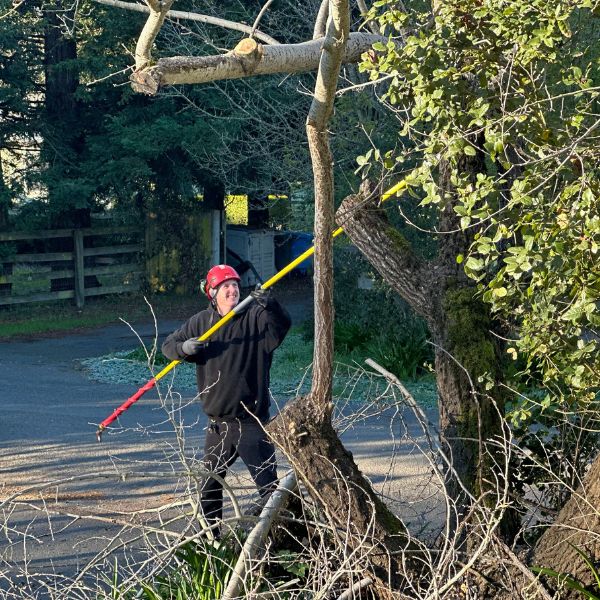
Types of Tree Pruning Services
Different trees and situations require different pruning approaches. Our tree care professional will assess your trees and recommend the most appropriate type of pruning to achieve your goals while maintaining tree health and structural integrity.
Crown Cleaning
Selective removal of dead, dying, diseased, and broken branches to improve tree health and reduce risk. This basic level of pruning is beneficial for all trees and helps prevent branch failure.
Crown Thinning
Strategic removal of live branches to reduce crown density. This allows better light penetration and air movement through the canopy while maintaining the tree's natural shape.
Crown Raising
Removal of lower branches to provide clearance for buildings, vehicles, pedestrians, and sightlines. This common type of pruning must be done carefully to maintain proper trunk taper and tree stability.
Crown Reduction
Decreasing the height or spread of a tree's crown when necessary for utility line clearance, view preservation, or risk management. Unlike harmful topping practices, proper crown reduction maintains the tree's natural form and health.
Structural Pruning
Proactive pruning of young and middle-aged trees to develop proper branch structure and form. This helps prevent future problems and reduces maintenance needs as trees mature.
Vista/View Pruning
Selective pruning to enhance views while preserving tree health and appearance. Our arborists use advanced techniques to create and maintain view corridors through careful reduction and thinning.
Fruit Tree Pruning
Specialized pruning to enhance fruit production, maintain tree size, and facilitate harvesting. Proper timing and techniques are crucial for optimal results.
Pruning Near Powerlines
Professional pruning to maintain safe distances between trees and power lines. This work requires specialized training and should only be performed by qualified professionals.
Our Professional Tree Pruning Process
At Systemic Tree Service, we follow a systematic approach to ensure high-quality results and customer satisfaction. Our process starts with understanding your needs and ends with a thorough clean-up of your property.
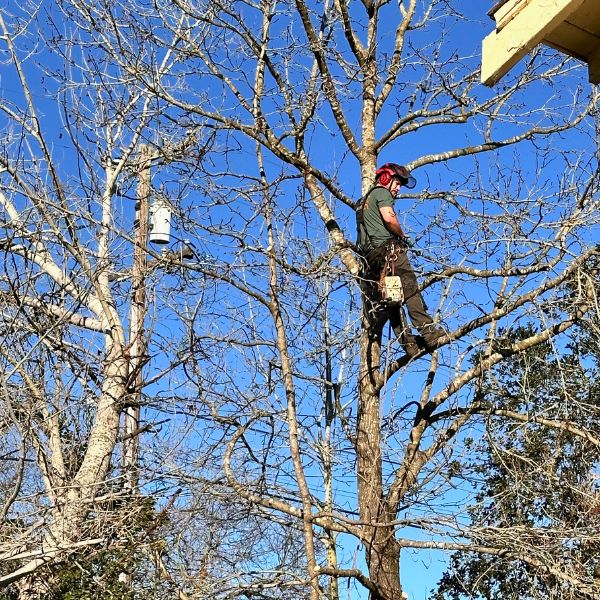
Protect Your Investment
Overgrown or unstable trees can seriously impact your property value. Let our team help preserve and enhance your landscape's worth.
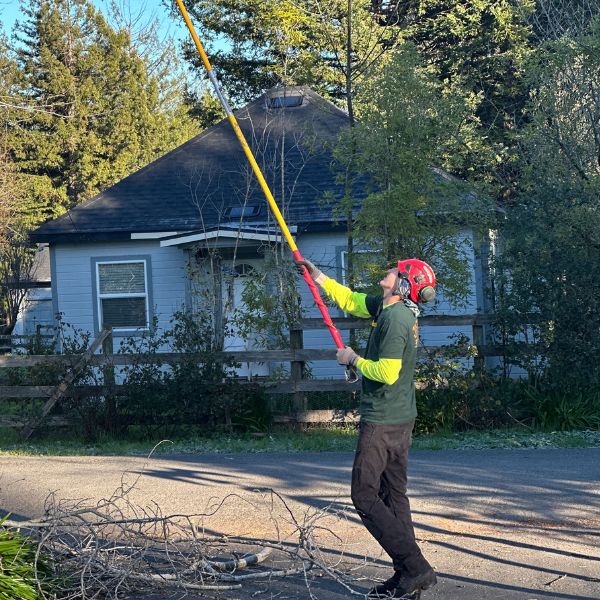
Never attempt to prune trees near power lines. Only qualified line clearance workers should work within 10 feet of electrical lines. If you notice branches growing into power lines, contact Pacific Gas & Electric Company for professional assistance.
Safety First: What to Know About Our Tree Pruning Work
Your safety and property protection are our top priorities. Our comprehensive safety protocols ensure that every pruning job is completed without incident, protecting you, your property, and our crew members.
Industry-Leading Safety Equipment and Protocols
Before any work begins, our crew establishes clear safety zones and positions equipment for optimal access and protection. Every crew member is equipped with complete safety gear, including helmets with face protection, cut-resistant clothing, professional climbing gear, and high-visibility garments that exceed industry standards.
Safety Guidelines During Tree Work
While our crew is working, we ask that household members remain inside during overhead work for maximum safety. Please keep pets secured indoors or in an area away from the work zone. Our crew members may direct traffic when working near streets, and we maintain clearly marked work zones throughout the project.
Advanced Property Protection Methods
Our experienced crew uses professional rigging techniques to control branch removal with precision. When needed, we place protective materials like plywood over delicate landscaping. For your peace of mind, Systemic Tree Service maintains comprehensive insurance coverage for all pruning work.
Preparing for Your Tree Pruning Service
A few simple preparation steps help us provide efficient, high-quality service. Here's how you can help us make your pruning project successful:
Ensuring Safe and Easy Site Access
Ensure our crew can easily access the work area by unlocking gates and clearing vehicles from driveways and nearby parking areas. If you have an automatic sprinkler system, please turn it off during service. Let us know about any invisible fencing or underground features we should avoid.
Protecting Your Outdoor Belongings
The day before service, remove portable outdoor items like furniture, grills, and potted plants from the work zone. Point out any sensitive plants or garden features to the crew leader. A clear workspace allows us to complete your pruning project efficiently while protecting your outdoor belongings.
Preparing Your Home and Family
Our work may create noise during regular business hours, so you might want to plan quieter activities away from the work area. We recommend closing windows near the work zone and keeping pets in a comfortable indoor space where they won't be disturbed by the equipment sounds.

Best Times for Tree Pruning: General Guidelines
Understanding when to prune your trees can significantly impact their health and growth. While emergency pruning and deadwood removal can be done any time, planning routine pruning during optimal times maximizes benefits and minimizes stress on your trees.
North Bay Area Pruning Calendar
The North Bay's Mediterranean climate creates unique opportunities for year-round tree care, with special attention needed during fire season and the wet winter months.
Major structural pruning during the wet season when soil is stable. Excellent time for native oak pruning and general maintenance while disease pressure is low.
Primary pruning period for flowering trees after bloom. Focus on managing spring growth flushes and maintaining clearance from structures.
Critical period for fire safety pruning and deadwood removal. Create proper spacing between trees and remove ladder fuels while maintaining tree health during dry months.
Good time for general maintenance and structural improvements before winter storms. Focus on improving wind resistance and maintaining drainage patterns.
Tree Pruning Permits & Local Regulations
Are Pruning Permits Required in North Bay Area?
Local regulations about tree pruning vary throughout the North Bay area. Our team stays current with all local requirements and can handle permit applications when needed. Most routine pruning doesn't require permits, but you may need authorization when:
- Pruning protected or heritage tree species
- Working on street trees or in public right-of-ways
- Removing more than 25% of a tree's live crown
- Pruning in environmentally sensitive areas
Managing Your Pruning Debris
Wood Chip and Debris Removal Options
After pruning, we offer several options for handling the resulting debris:
Professional Off-site Disposal
Ensure our crew can easily access the work area by unlocking gates and clearing vehicles from driveways and nearby parking areas. If you have an automatic sprinkler system, please turn it off during service. Let us know about any invisible fencing or underground features we should avoid.
Complimentary Wood Chips
If you'd like wood chips for landscaping, we can dump the chips from pruned branches in a pile. Usually, this will be in your driveway or another spot that’s easily accessible for our chip truck.
Ready to learn more about pruning costs for your trees?
Schedule a free evaluation for detailed pricing.
Why Choose Systemic Tree Service for Your Tree Pruning Needs
Frequently Asked Questions About Tree Pruning in the North Bay
Professional tree pruning costs vary based on tree size, location, and work complexity. Factors such as tree height and spread, accessibility for equipment, and proximity to structures can make the project more challenging. During our free initial site visit, we evaluate these factors and provide a detailed written proposal so you’ll know what to expect.
Most mature trees benefit from professional pruning every 3-5 years, while young trees need more frequent pruning to develop proper structure. However, factors like tree species, location, and growth rate affect timing. Our tree care professionals can create a custom pruning schedule for your trees.
While these terms are often used interchangeably, pruning typically involves selective removal of specific branches for tree health and structure. Trimming usually refers to more routine maintenance like clearing buildings or maintaining shape. Our services cover both needs.
Only specially certified line clearance arborists should work near power lines. We have qualified professionals for this work and coordinate with utility companies when needed. For safety, never attempt to prune branches near any power lines yourself.
Professional pruning actually benefits trees by removing dead or diseased branches, improving structure, and promoting healthy growth. Our Certified Arborists follow scientific pruning standards to minimize stress and support long-term tree health.
Yes, thorough cleanup is included with every pruning service. We remove all debris, rake the area, and can either haul away the material or leave wood chips if you prefer. Your property will be left clean and tidy.
While the ideal timing depends on tree species and pruning goals, most trees can be pruned year-round if needed. However, certain times offer specific benefits:
- Winter: Best for structural pruning of dormant trees
- Spring: Ideal after flowering for spring-blooming trees
- Summer: Good for slowing unwanted growth
- Fall: Best limited to deadwood removal and hazard reduction
Common signs that indicate pruning is needed include:
- Dead, dying, or broken branches
- Branches touching buildings or power lines
- Dense canopy blocking light
- Crossing or rubbing branches
- Storm damage
- Blocked views or access

Trees Too Large? Reduce Their Size the Right Way!
Why We Rarely Top Trees
The Hidden Dangers of Tree Topping
Tree topping - cutting off the upper portion of a tree or making large heading cuts - causes serious harm to trees. This outdated practice creates hazardous conditions by:
- Starving the tree by removing too many leaves
- Creating weak, unstable new growth
- Opening large wounds that invite decay
- Destroying the tree's natural form
- Shortening the tree's lifespan
When Topping Is Necessary
While topping is usually not recommended, there are times when it’s the safest and most practical option – especially for certain conifers in residential neighbourhoods. For example, if a tree has grown too tall and poses a risk to nearby homes, power lines, or structures, topping might be the best way to address the problem. In these cases, our team approaches the job with care, focusing on safety while minimizing long-term damage to the tree.
Professional Solutions for Safer Size Management
Instead of topping, our tree care professionals use proper crown reduction techniques that maintain your tree's natural form while achieving height control goals. These methods:
- Preserve the tree's structure and health
- Create smaller wounds that heal properly
- Maintain stable branch attachments
- Provide longer-lasting results
- Keep your property safe
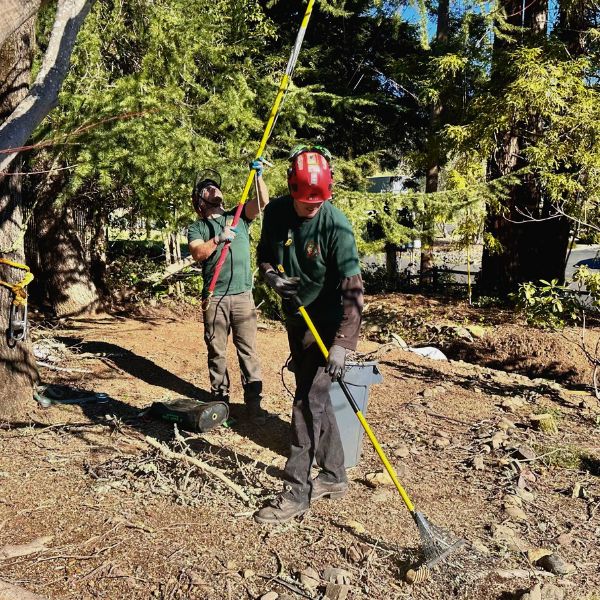
Considering topping your trees? Contact our tree care professionals first to learn about safer alternatives that will achieve your goals while preserving your trees' health and value.
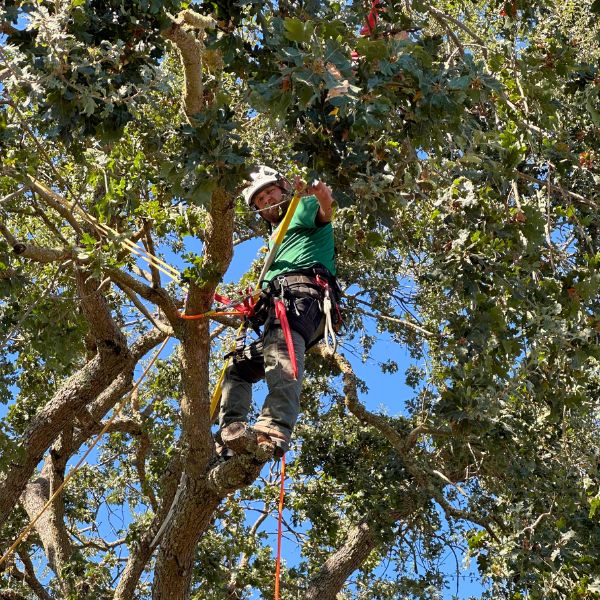
Additional Tree Care Services to Consider
Comprehensive Property Tree Assessment
While our arborists are on your property for pruning, they can provide a thorough evaluation of all your trees. This proactive assessment helps identify:
Early Detection of Tree Health Issues
Our Certified Arborists check for signs of decline, disease, or structural problems that could affect your trees' health and safety. Early intervention often prevents costly problems later.
Safety and Clearance Evaluation
Our experts assess your entire property for potential hazards or clearance issues, including:
- Dead or declining branches
- Storm damage risks
- Interference with structures
- Blocked sightlines or access points
Professional Tree Support Systems
Some trees need additional support beyond pruning. Our structural support services help preserve valuable trees that show signs of potential failure.

Common North Bay Tree Species & Their Pruning Needs
Coast Redwood Maintenance Strategies
These magnificent trees primarily need dead branch removal and careful structural pruning of any co-dominant stems. Avoid removing living branches larger than 6 inches in diameter.
California Bay Laurel Growth Management
Regular pruning helps control size and reduce leaf diseases. Focus on thinning to improve air circulation while maintaining the tree’s natural form.
Coast Live Oak Care Guidelines
Minimal pruning is best for these native trees. Focus on hazard reduction and structural improvements during the dry season to prevent disease spread.
